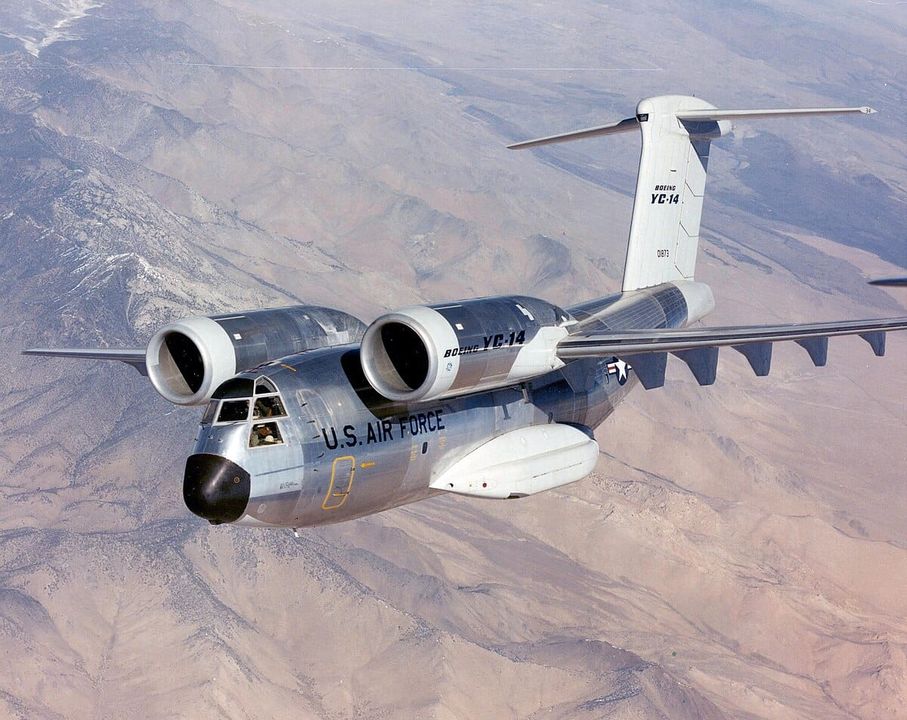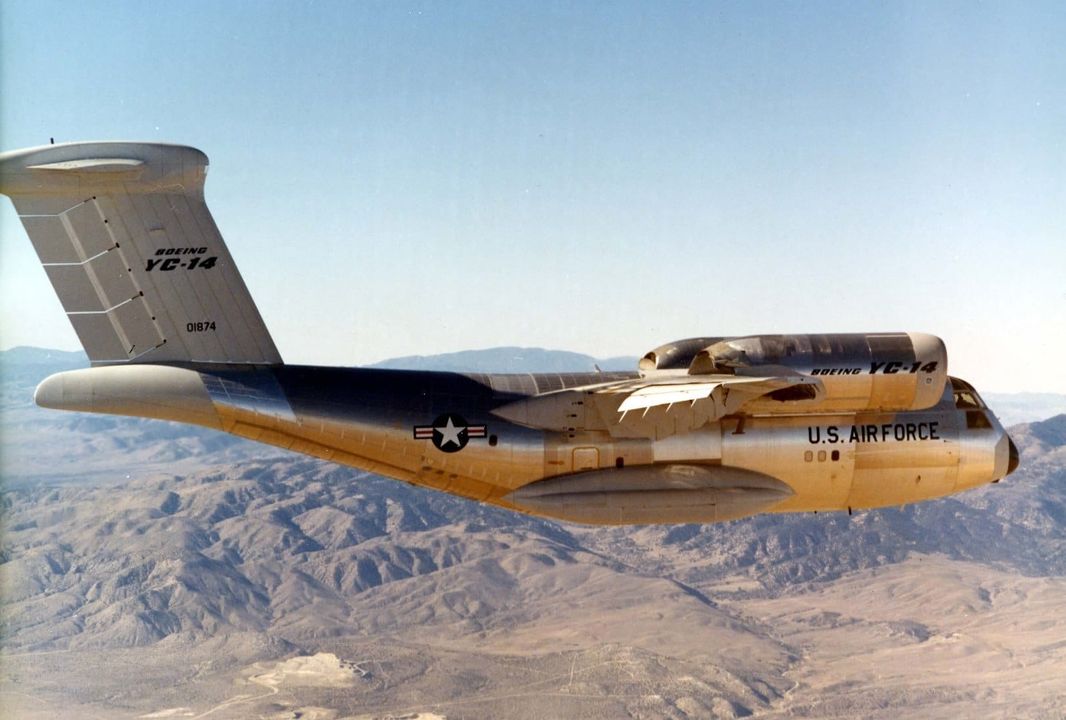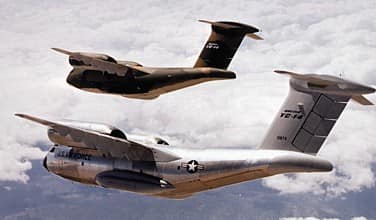What Could Have Been and Almost Was…

Designed by Boeing, the YC-14 was a tactical transport which was originally intended to be a replacement for the venerable C-130 Hercules. You see, the Vietnam war showed just how important airborne logistics were in a modern conflict. During that war, C-130s ran supplies for American and other allied forces throughout South East Asia and in some cases, had a hand in securing victories in certain battles.
Development of the YC-14
Now while the Hercules was good, the Air Force wanted something better. A tactical transport that could not only carry more than the current generation C-130s which were in operation at the time but could land on short, underdeveloped runways. The requirements were sent out and Boeing’s offer was the YC-14.

One look at this thing and already you would notice the odd placement for the engines. But this was by design, as the position of the twin CF6-50 turbofan engines on the wings with huge thrust reversers gave the YC-14 STOL capability. This gave it the ability to take off and land on runways and landing strips one would not expect an aircraft of that size to use. In one test, the YC-14 was able to take off in less than 400 feet in a headwind, but only needed 800 feet on average.
Innovations and Capabilities
The massive thrust reversers also allowed the jet aircraft to reverse on its own and had an incredibly low landing speed of just 68 mph. All the while the aircraft was recorded as having a top speed of 504 mph at altitude. It had an initial maximum payload of 69,000 lbs, though it could only carry 27,000 lbs for STOL operations. But the aircraft proved it could carry more than that, as some tests included transporting and deploying an M60-A2 Main Battle Tank.

The YC-14 also has the distinction of being one of the first aircraft to be fitted with an early digital flight information readout in the cockpit, which was almost unheard of at that time and most aircraft didn’t even have. The aircraft did show some issues with drag during flight tests, but a minor tweak to the wing design fixed that issue and it looked as if this could have been a success for Boeing and the USAF. So much so, that one of the prototypes was sent to Europe to drum up interest with other NATO members. But sadly, it was not to be.
The Cancellation of YC-14
Though the YC-14 was a success, the Air Force began to shift its focus back to strategic transport, rather than tactical. They were no longer interested in the YC-14 and wanted something that was between the initial program and the much larger C-5 Galaxy. There was also the fact that the C-130 was still a desirable aircraft with a lot of room for improvement. As a result, there really wasn’t a need for an aircraft like the YC-14 anymore and consequently, the program was canceled.
Yet both prototypes still exist, with one currently on display at the Pima Air Museum in Arizona, while the other is stored at the USAF Davis-Monthan Boneyard.
Legacy of the YC-14
A great plane, that was just not needed anymore. Curiously enough, many believe that the Soviets actually stole some of the designs of the YC-14 and used it to develop the Antonov An-72, which also has a similar engine layout. Though it most likely just a coincidence and Antonov was “inspired” by Boeing’s design.
~NC










